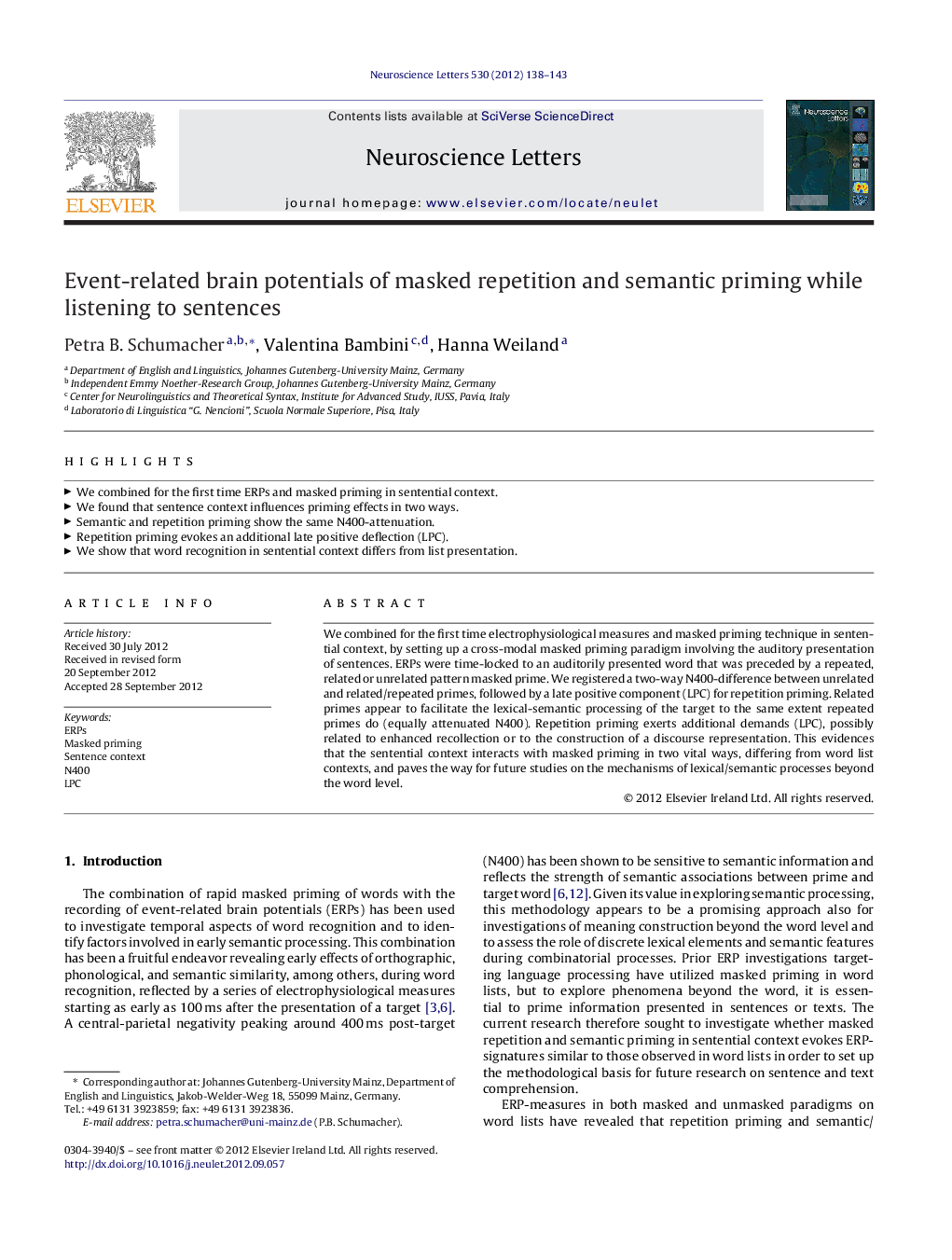| Article ID | Journal | Published Year | Pages | File Type |
|---|---|---|---|---|
| 4344118 | Neuroscience Letters | 2012 | 6 Pages |
We combined for the first time electrophysiological measures and masked priming technique in sentential context, by setting up a cross-modal masked priming paradigm involving the auditory presentation of sentences. ERPs were time-locked to an auditorily presented word that was preceded by a repeated, related or unrelated pattern masked prime. We registered a two-way N400-difference between unrelated and related/repeated primes, followed by a late positive component (LPC) for repetition priming. Related primes appear to facilitate the lexical-semantic processing of the target to the same extent repeated primes do (equally attenuated N400). Repetition priming exerts additional demands (LPC), possibly related to enhanced recollection or to the construction of a discourse representation. This evidences that the sentential context interacts with masked priming in two vital ways, differing from word list contexts, and paves the way for future studies on the mechanisms of lexical/semantic processes beyond the word level.
► We combined for the first time ERPs and masked priming in sentential context. ► We found that sentence context influences priming effects in two ways. ► Semantic and repetition priming show the same N400-attenuation. ► Repetition priming evokes an additional late positive deflection (LPC). ► We show that word recognition in sentential context differs from list presentation.
